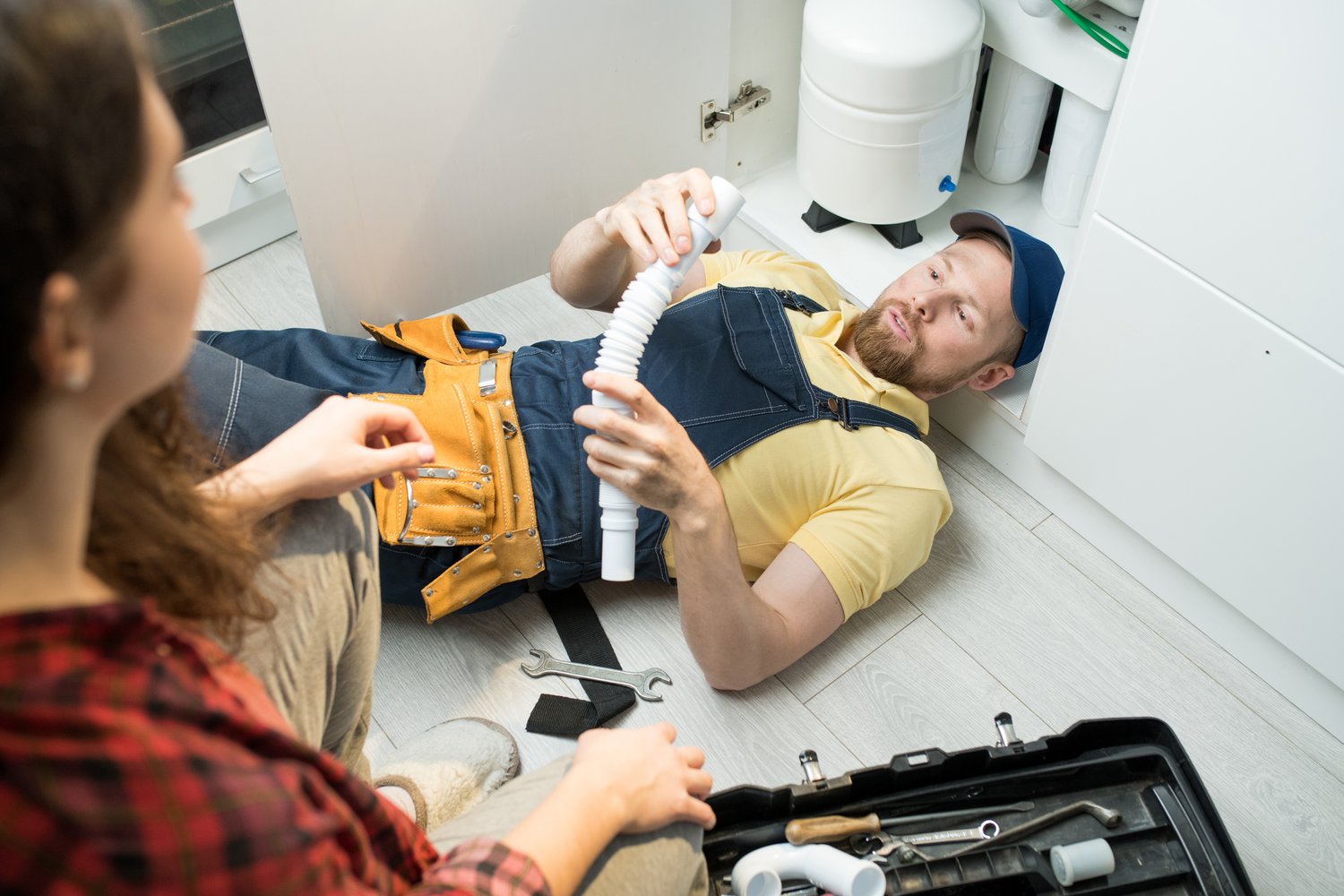Imagine coming home to discover water pooling around your feet, a result of unseen corrosion in your water lines—a threat hiding in plain sight. Addressing corroded water lines isn’t just about preventing an immediate disaster; it’s about safeguarding your home’s future. The journey to a leak-free haven starts with understanding the insidious nature of corrosion and ends with the empowerment to replace those aging lines with confidence.
- Identify the telltale signs of corrosion to prevent costly water damage before it starts.
- Equip yourself with the essential tools and materials needed to tackle this plumbing challenge head-on.
- Follow a comprehensive, step-by-step guide designed for safe and efficient water line replacement.
By delving into this article, you’re not just learning to fix a problem, you’re investing in the longevity of your home’s plumbing system. Dive deeper to transform a daunting task into a manageable, empowering project that enhances your home’s efficiency and safety.
Understanding the Need for Replacing Corroded Water Lines
Corrosion in water lines is a common issue that can have significant consequences for your home’s plumbing system. Over time, the metal pipes in your plumbing can begin to rust and deteriorate, leading to restricted water flow, leaks, or even pipe bursts. These problems can cause extensive water damage to your property, resulting in costly repairs.
It’s crucial to identify the signs of corrosion early. Look for discolored water, reduced water pressure, or an unusual metallic taste in your tap water. These are key indicators that your pipes might be corroding. Visible signs such as rust patches or leaks on exposed pipes should also prompt immediate attention.
Timely replacement of corroded water lines is essential not only for preventing damage but also for maintaining the efficiency and safety of your plumbing system. By addressing corrosion before it escalates, you can ensure that your home remains secure and your water supply remains uncontaminated.
Tools and Materials Required for a Successful Replacement
To carry out a successful water line replacement, it’s important to have the right tools and materials at your disposal. These will enable you to perform the task safely and with precision. Key tools to gather before you start include pipe cutters, which are indispensable for removing sections of the old, corroded pipes cleanly.
Wrenches are also essential for loosening and tightening the various fittings during the replacement process. Ensure you have both adjustable and pipe wrenches on hand for versatility. It’s equally important to use the right piping materials that offer durability and corrosion resistance. Consider modern alternatives such as PEX or copper pipes, which stand up better against corrosion and have a longer lifespan.
In addition to the main tools and materials, other supplies such as pipe thread tape, sealant, and a bucket to catch water drips can make the process smoother. Preparing these items ahead of time ensures that once you begin the replacement, your project will proceed without unnecessary interruptions.
Step-by-Step Guide to Replacing Corroded Water Lines
Replacing corroded water lines is essential to ensure efficient plumbing and prevent water damage in your home. This step-by-step guide will walk you through the process, highlighting the tools and techniques needed to efficiently replace those old, corroded pipes.
Step 1: Shut Off the Water Supply
Before you begin, locate the main water shut-off valve in your home. It is crucial to completely shut off the water supply to prevent leaks while you’re working on the pipes. Open faucets to drain any remaining water.
Step 2: Identify the Corroded Sections
Inspect your water lines carefully to pinpoint areas affected by corrosion. Look for discoloration, leaks, or rust around water line connections. Identifying these areas helps focus your efforts and ensures all damaged sections are replaced.
Step 3: Gather Necessary Tools and Materials
Ensure you have all the necessary plumbing tools and materials ready. Essential tools include pipe cutters, wrenches, and replacement piping such as copper or PEX pipes which are resistant to corrosion.
Step 4: Remove the Corroded Pipes
Using a pipe cutter or appropriate tool, carefully cut out the corroded sections of the pipe. Always make straight cuts for a clean fit with new pipes. Take precautions not to damage surrounding areas.
Step 5: Prepare New Piping
Measure and cut new sections of pipe to fit the spaces from which corroded pipes were removed. Ensure that the new piping is the same diameter as the existing plumbing for a proper fit.
Step 6: Install the New Pipes
Position the new pipe sections into place and secure them with connectors. If using copper pipes, solder the joints for a secure connection. For PEX pipes, use clamps or crimp rings appropriately. Ensure all connections are tight and secure.
Step 7: Turn On the Water Supply
With the new pipes securely in place, slowly reopen the main water supply valve. Check for any leaks by running water through the fixtures. Inspect all new connections to ensure they are leak-free.
Step 8: Final Checks and Maintenance Tips
After confirming there are no leaks, clean up your work area. Regularly check your plumbing system for signs of future corrosion. Early detection can prevent significant issues and extend the life of your pipes.
By following these steps, you’ll efficiently replace corroded water lines, ensuring a durable and reliable plumbing system. Always prioritize safety and use high-quality materials to avoid recurring issues.
Frequently Asked Questions about Replacing Corroded Water Lines
What are the signs of corroded water lines?
- Discolored Water: Yellow or brown water from taps.
- Decreased Water Pressure: Reduced flow in showers or faucets.
- Leaks: Visible drips or moisture around pipes.
Why is it important to replace corroded water lines promptly?
Preventing Damage: Corroded lines can burst, causing water damage. Timely replacement avoids costly repairs and improves water quality.
What tools do I need for replacing water lines?
- Pipe Cutter: For clean cuts on pipes.
- Wrench: To disconnect and connect fittings.
- Piping Materials: Corrosion-resistant pipes for replacement.
Can I replace corroded water lines myself?
Yes, with the right tools and guide, it’s a DIY-friendly task. However, consider hiring a professional if unsure.
How often should water lines be inspected for corrosion?
Every 1-2 years: Regular inspections help detect early signs of corrosion and prevent major issues.





